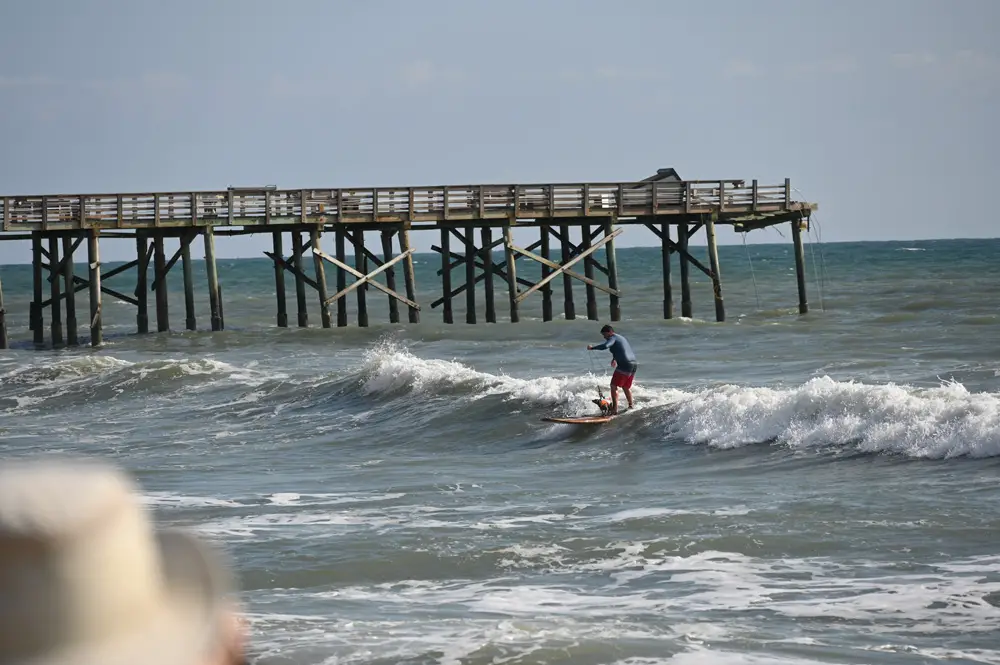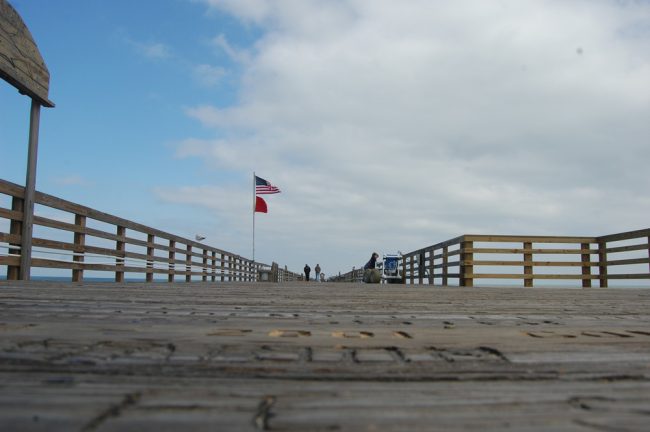
The Flagler Beach City Commission Thursday unanimously approved a measure authorizing the city administration to temporarily borrow money internally for pier demolition, design and reconstruction costs now estimated to be $18 million.
The debt would be repaid by a tax-exempt financing note, itself to be reimbursed by the Federal Emergency Management Agency dollars.
“What this resolution allows us to do is to spend city funds in the process of moving that project forward, and then be reimbursed from the loan proceeds that we get from from the bank,” City Manager Dale Martin said. “So it allows us to read repair ourselves for the purpose of the law. So this is a standard process for FEMA projects.
The new pier is 90 percent designed. “The city has to come up with the $18 million to fund the demolition and reconstruction before FEMA reimburses us,” City Manager Dale Martin said. “This is a standard process for FEMA projects.” The city is operating on a $36 million budget spread over a half dozen funds totaling a budgeted reserve of $2.65 million at the beginning of the fiscal year.
The city is currently lining up financing for the project, not all of which FEMA will reimburse. FEMA’s portion is 75 percent, or $13.5 million. The state’s potion is 12.5 percent, the city’s match is 12.5 percent. Last year the Legislature appropriated $4.5 million for the project, covering the match. FEMA will not reimburse until the project is completed, making a bridge loan necessary, or more than one, as the case may be.
The city doesn’t want to delay the project, so as it seeks financing, any costs that will be incurred meanwhile would be paid from city funds. The resolution approved Thursday sets out the city’s intention to “be reimbursed from proceeds of a future tax-exempt financing,” an eventual loan that may exceed $18 million. “It is reasonably expected that the total amount of debt to be incurred by the Issuer with respect to the Project will not exceed $22,000,000,” the resolution states. The resolution drew no questions from commissioners and no overt interest from the public.
The pier, damaged by successive hurricanes or tropical storms since Hurricane Matthew in 2016, lost its eastern end since then. It was repaired and stabilized at a cost of $1 million in 2017, money that was partly but not entirely repaid by FEMA and insurance. It reopened, shortened to 637 feet, in June 2017.
Storms kept hammering the structure, as did a nearly three-month closure during the Covid pandemic, until Hurricane Ian finished it off in September 2022. The pier was declared unsafe and condemned. It will be replaced by an 800-foot concrete pier.
Moffat and Nichol, the design firm contracted for the project, provided a preliminary look at what the pier may look like 15 months ago, when it was beginning the design process. The pier will be 11 feet higher than the current pier, to account for rising seas. At the time, the firm was projecting a completed design by last January, with construction starting this summer and completion by the end of 2025. Gabriel Perdomo, a coastal engineer and one of the firm’s designers, called the plan “ambitious.” He was right.
But work is imminent. “I don’t think they’re ready to issue the bids yet. But they’re just getting ready to,” Martin said on Feb. 8.
The first 100 feet of the pier will preserve the existing structure as a link to the past and the old pier’s character. Earlier this month Perdomo wanted to know how much of that older part commissioners want to preserve–only the deck boards, many of which have engraved names and memorials, or all of the timber.
Iconic in its day as a landmark and a favorite spot to walk or gaze at, the pier has now become iconic for its status as a relic, with Berlin Wall-type attraction for people who want their piece of it. “Many citizens have reached out wanting all kinds of different pieces of that,” Commission Chairman Eric Cooley said. “Nobody ever asked for pilings, but people did ask for other pieces of the pier.” Including pieces of wood that they might turn into wood art or simply frame as a memory. Others want as much of the pier’s woodwork preserved and memorialized somehow.
But commissioners are reluctant to have piles of wood stored somewhere, making the city responsible for disposal, as opposed to the keeping it the responsibility of the contractor demolishing the pier. “Knowing this city, it’ll sit there and sit there,” Commissioner Rick Belhumeur said. “But certainly save the deck boards.” Or some of them. How many of the boards will be preserved isn’t yet clear, but the boards with names on them will all be preserved.

![]()
Flagler Beach Fishing Pier_Public Outreach #1 Presentation_DRAFT





